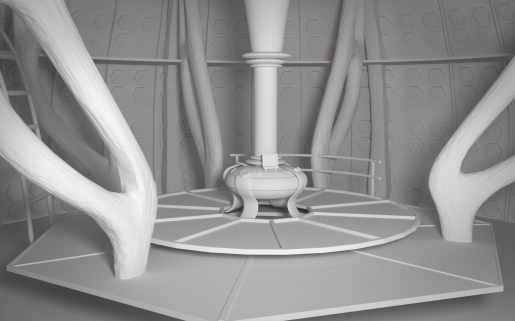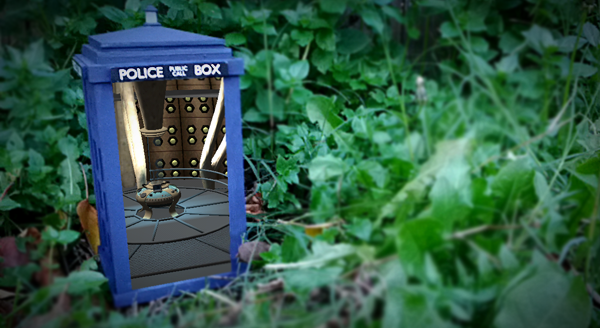As I used roughly a zillion words to explain yesterday, I’ve spent the last few months tinkering with all sorts of little projects in an effort to learn to build awesome things. Most of the projects were intended to be scrapped from the get-go, meant primarily to help me wrap my head around some concept. Brain fodder, if you will. With others, I was testing the water with ideas I might want to flesh out into proper ventures down the road.
With a few of’em, I was just putting things I’d learned together for the sake of just making something cool, viability be damned. This is one of those.
I built a TARDIS. With the help of some augmented reality trickery, it’s bigger on the inside (as any proper TARDIS should be.) Check it out:
The Outside:
I had a few hours to kill back around Thanksgiving, so I wanted to build something I could put on my desk. I had been watching a crazy ridiculous totally reasonable amount of Doctor Who that week, so it took all of about nine seconds before my brain settled on building a TARDIS. It’s fairly simple structurally, so it seemed like a good afternoon project.
I grabbed some wood and a couple bottles of roughly-the-right-color paint, and sharpened my crappy ol’ Xacto knife (if I did this again, I’d use a laser cutter. Cleaner cuts in less time with far fewer calluses. Plus, you know, lasers.)
After a few hours of choppin’ away and feeling like I was living out this scene, I was done. Or so I figured. I put her up on top of my desk and went off to tinker with other projects.
Half a week later, I realized it’d be pretty straightforward to make the light up on top function. A quick trip to RadioShack and another hour or three of cutting later, she was shinin’ bright. Back on my desk it went. I was totally, positively done this time. For real real.
Then my stupid brain went and thought “Hey… wouldn’t it be cool if it had an interior?”
The Inside:
There’s a running gag in Doctor Who, wherein new characters are always dumbstruck by the TARDIS being bigger on the inside than it appeared on the outside. Once I realized I had a rough idea of how to pull that off, I couldn’t not do it.
The catch: I would have to do some 3d modeling work, which I hadn’t done before. At least, not for years — and certainly not with any modern modeling tools.
So I grabbed a copy of Blender . I know plenty of people who used Blender for work each day. It couldn’t be that tough, right? El. Oh. El.
A couple days of stumbling my way around the massive learning curve that is Blender, I had things mostly figured out. I modeled out a rough likeness of the TARDIS’ interior, based on how it appeared in the series from 2005-2010.

An early clay test render of the TARDIS interior model
Putting It Together:
With the outside built and the interior model complete, I needed some way to bring the two together.
I had some experience using the truly fantastic Unity game engine along with Qualcomm’s Vuforia API, so I started there. Perfect choice. If you’re messing with AR stuff, I can’t recommend that combination of tools enough.
I originally wanted to use the TARDIS’ front surface as the marker which the companion app would recognize, but non-flat surfaces (even ever so slightly) just really, really don’t work well (mainly because of shadows and what not.) Then I tried using the little “Free for use of Public” sign from the TARDIS’ front as a marker, but it was just too small. Eventually I just hacked off the front door and put in the big timey-wimey space-warp-lookin’ marker you can see in the video up above.
One tricky part was figuring out how to render the TARDIS’ interior only where the empty space of the open doors would be. That was, after all, the basis of the entire illusion. I ended up using a technique called “depth masking”, wherein you actually do render the entire object — but you also render an invisible object with a specialized shader that keeps the camera from actually displaying the parts that shouldn’t be shown. It’s the same technique game developers often use to put boats in their game without the water plane clipping through the hull. The water often is there, you just can’t see it.
And that’s that: my tiny, desktop-sized TARDIS that just so happens to be bigger on the inside.



